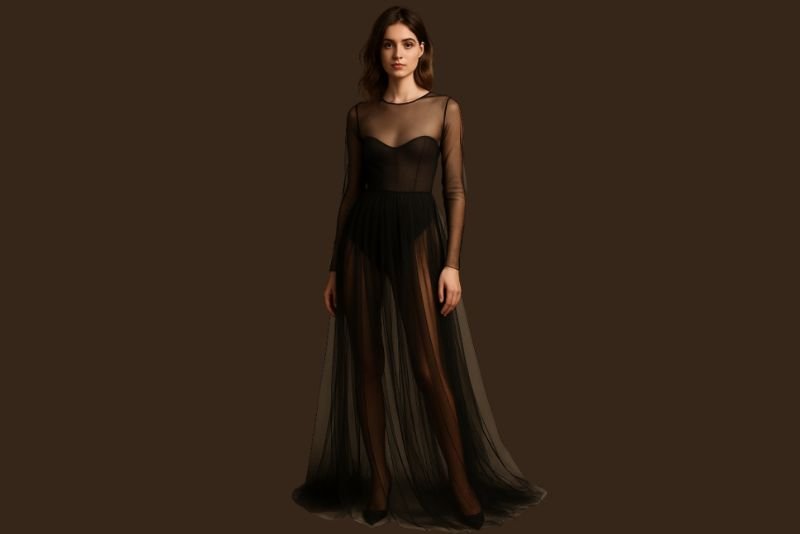Two years ago, Irina Shayk turned heads at Cannes in a daring Gucci monogrammed lingerie set layered with sheer fabric—a bold take on the rising naked dress trend. It was a moment that captured the era’s post-lockdown obsession with body-baring fashion, echoed on runways by Rick Owens, LaQuan Smith, and even the usually conservative Tory Burch.
But in 2024, things have changed.
Cannes 2024: From Transparent to Tasteful
This year’s Cannes Film Festival fashion takes a far more modest approach. Shayk herself showed up in a floor-sweeping, elegant Armani Privé gown. What’s changed? A new dress code was quietly introduced, one that explicitly bans nudity on the red carpet and other festival spaces. While rules like “no long trains” seem to be inconsistently enforced, celebrities appear to be mostly adhering to the modesty memo.
Highlights from the red carpet:
- Halle Berry sported a classic Chanel skirt suit as a festival juror
- Julia Garner chose a sheer Gucci gown—lined to fit within the guidelines
- Bella Hadid, often a red carpet risk-taker, kept things subtle and PG this time around
Is the Naked Dress Trend Fading for Good?
Cannes may be just one stop on the celebrity circuit, but its red carpet often sets the tone for the fashion world. The shift to more covered-up looks signals more than just a temporary change—it suggests a broader cultural shift.
Influences behind the shift:
- Social conservatism is on the rise, both online and offline
- There’s a growing nostalgia for vintage silhouettes, particularly from the ’50s and ’60s
- Fashion fatigue—many are simply tired of sheer everything
During this year’s awards season, fashion leaned heavily into throwback charm: sweetheart necklines, satin gowns, and vintage-inspired cuts were front and center. Elle Fanning, for instance, donned a reimagined version of a 1953 Balmain gown, making a strong case for classic elegance.
The Role of Culture and Virality in Fashion’s Modest Turn
Our social feeds are increasingly filled with “tradwife” aesthetics and conservative gender narratives. In such an environment, modest fashion feels less like personal choice and more like a broader cultural movement—one that romanticizes the past.
It’s also likely that the shock factor of sheer dresses has worn off. In a world oversaturated with Daily Mail headlines and Instagram thirst traps, the naked dress may have simply lost its edge.
Body Ideals Are Changing—And So Is What We Wear
A decade ago, the fashion industry was obsessed with what some dubbed the “couture body”—a physique sculpted not by garments but by gyms and diet culture. Back then, sheer dresses were a way to show off hard-earned results. But with the rise of GLP-1 weight loss drugs like Ozempic, achieving thinness may now seem easier—and less impressive. So why flaunt it?
What was once an artfully revealed silhouette is now just… expected. And maybe that’s the problem.
One Last Question: Why Are Men Exempt?
As debates swirl about what women can and cannot wear on the red carpet, there’s little scrutiny aimed at men’s fashion. And yet, Jeremy Strong in a pink bucket hat and corduroy leisure suit arguably draws more sartorial side-eye than a strategically sheer gown ever could.
The Future of Red Carpet Fashion Is Less Skin, More Style
The era of the naked dress may not be over entirely, but its dominance is clearly waning. As modesty, nostalgia, and a hunger for authenticity rise, we’re seeing a return to fashion that prioritizes storytelling and individuality over shock value.
And maybe that’s exactly the reset the red carpet needs.




